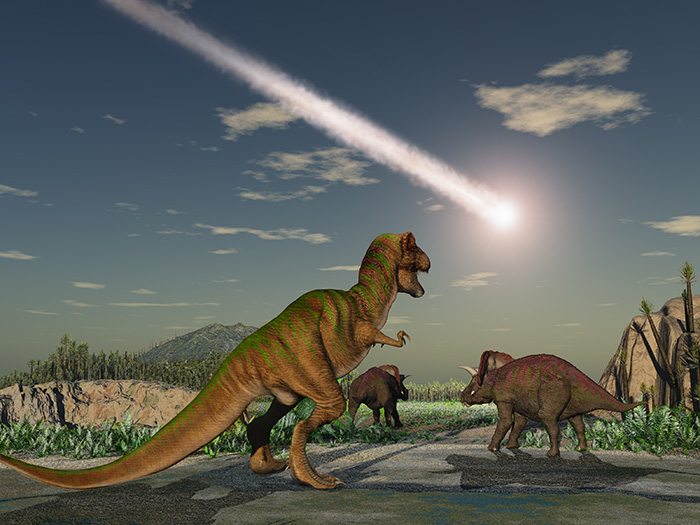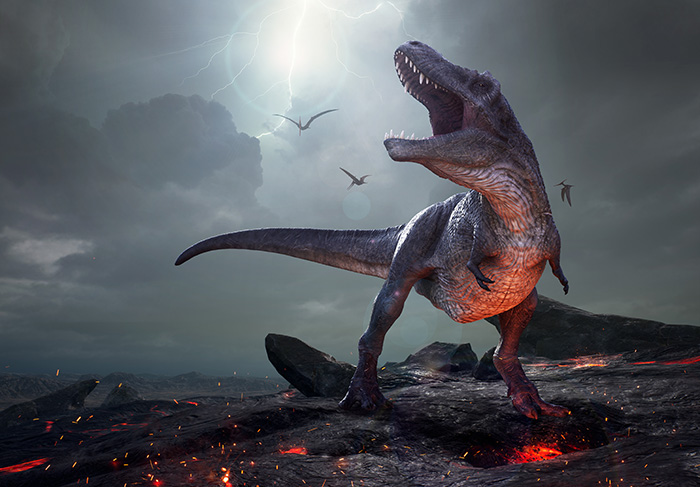The Tsunami that Killed Dinosaurs!
Imagine for a moment that you are a dinosaur, 66 million years ago. You live in the lush coastal plains near where the modern city of Galveston, Texas was built in the future. Your life is filled with looking for food, you’re carnivorous, so you spend your days and nights scouting for food: mammals, small reptiles, even fish. You’ve been living in this neck of the woods for decades and nothing much perturbs you. You’re in charge of your destiny.
Then everything changed. It all happened very fast, you see a bright light in the sky to the east, a searing flash, and next, a boom that is the loudest sound you’d ever heard, so loud it deafens you (if it mattered, but sadly it doesn’t). The ground shakes violently: earthquakes almost never occur in these parts, and this is a magnitude 13, likely the largest quake Earth has ever felt! Your giant 50-foot-long frame is thrown to the ground, and you lie there stunned. Next, you are hit by searing heat, a giant fireball approaches from the ocean, skirting the water, wave after wave of heat burns your skin, and you roar in agony. But then you see it -- a giant wave coming also from the same direction -- you have seen storms before, even some hurricanes, but nothing like this. It’s a wall of water, some 90 meters high coming at you, there is nowhere to go, you begin to run towards the land, but it’s no good. After millions of years of dominance, it’s all over.
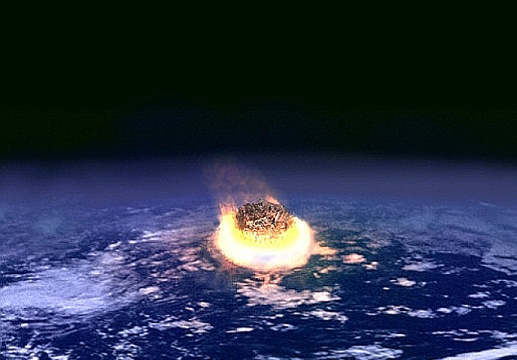
Well, of course, this is fiction, most dinosaurs were not drowned. Most likely died slowly because climate change that was a result of the impact hitting very volatile sedimentary rocks emitted a lot of climatically active gasses and soot, which cooled the planet by 25 degrees C for decades. Vegetation stopped growing, herbivores died off and ultimately so did you, the carnivorous dinosaurs. You didn’t drown, you slowly starved.
The tsunami part is true. The impact did generate a massive tsunami, and it was one of the largest waves Earth ever experienced. The asteroid that hit the Earth 66 million years ago was 8-10 km across and traveled from the northeast at a velocity of 20 kilometers per second which is 45,000 miles per hour, (!) causing the flash the dinosaurs observed. The collision was so violent it released an estimated 100 teratons of TNT, the equivalent of a billion nuclear bombs (the deafening sound and the earthquake). The collision released a blast wave and a fireball that incinerated vegetation along the coastlines of the Gulf of Mexico (the burning sensation). The colossal Chicxulub crater formed in a matter of minutes, in one of the most dramatic movements the Earth has ever experienced, rocks from depths of more than 20 km were excavated to the surface as a giant ring of mountains. The crater is what is known as multi-ringed, which means it is made of concentric faults that get progressively deeper towards the center.
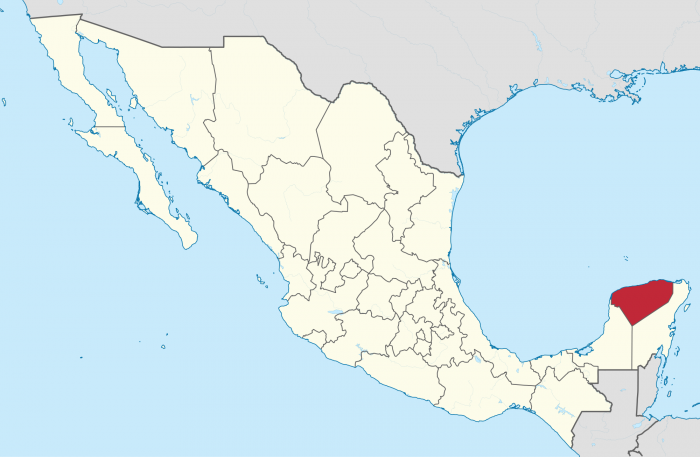
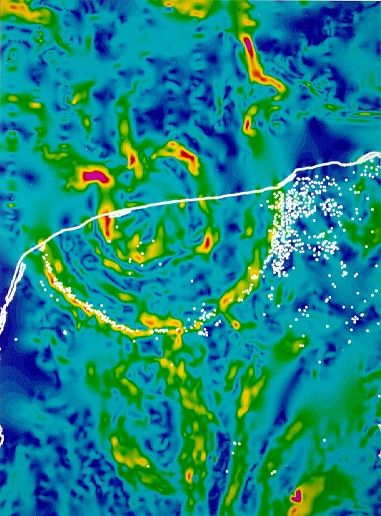
The crater has a diameter of 200 km and a depth of about 1 km, a giant hole in the ground that slowly filled with seawater over a period of hours. This wasn’t a slow seeping in of water, it was a massive surge, huge waves of water entering the crater. The crater had numerous connections to the surrounding ocean for this water to surge in, and once the crater was filled, giant waves of water exited as a massive tsunami. There were several phases in tsunami development.
When the water rushes back in it forms a central plume (a giant splash) that collapses outwards causing tsunami, this is known as a rim wave tsunami, the first tsunami to form. This wave would travel outside the crater and be the first tsunami to hit the Texas coast. However, it was not the last. Imagine dropping a huge boulder into a bathtub filled with water. The rim wave tsunami forms from the initial big splash (the plume) when the boulder displaces the water. This wave will travel out to the edges of the bathtub and reflect off of it. That is what happened in the Chicxulub crater, the rim wave tsunami hit the shores of the Gulf of Mexico and caused numerous reflected tsunami. But that wasn’t the end. The crater was unstable, with massive piles of rubble all over the place, and giant landslides were occurring everywhere. In addition, the tsunami were so big that they themselves triggered landslides. As we will learn in this module, landslides also trigger tsunami. So there was total chaos that lasted for days, multiple tsunami of varying size going in and out of the crater. And once the tsunami waned and energy began to subside, seiche waves formed, these were waves that did not exit the crater. It took months for the energy to totally diminish. Watch these simulations here:
Video: Chicxulub Tsunami (4:07) (No audio.)
Text on video: Chicxulub Tsunami. 65 million years ago, an asteroid 10 km in diameter struck Mexico's Yucatan Peninsula. The asteroid and its 100 km diameter crater have the Mayan name Chicxulub...but you might know it as "The Asteroid that Killed the Dinosaurs". Let's turn back the clock. Geography was different then. 65 million years ago, Yucatan was under a shallow sea...Florida did not exist...and most of central North America sat at less than 175 m elevation. Important Facts: Impactor - ; Diameter = 10 km; Velocity = 20 km/s; Density = 2.5 gm/cm3 ; Energy = 2.6 x 1023 J. Arriving at 40,000 miles per hour, the asteroid had the energy of 3 billion WW II era atomic bombs. Vertical Impact: Numbers = Wave Height in meters. Close in, tsunami waves reached about 100 m in height. Along the Mexican coast, the waves were 30-50 m. Some geologists suggest that the Chicxulub tsunami reached Chicago, Montana, or Canada. The simulation, however, predicts just 20-30 m waves in proto-USA. Perhaps the strike came at a low angle from the south? If so, it pushed bigger waves northward, but still, the tsunami falls short of legend. Fact is, the Chicxulub tsunami was restricted to ~100 m size because the impact struck in water ~100 m deep. Could impact-triggered landslides have generated the distant tsunami that geologists report? For now, suppose that the asteroid landed in deeper water a bit to the north. A deep water impact increases tsunami size by a factor of five. What if that happened today? Let's return to the present...and drop the rock. Several U.S. states would go missing. Over eons, asteroids of all sizes have hit Earth. Geological traces remain of some...but extinction-level asteroids like Chicxulub visit us perhaps once in 100 million years. That's small consolation for the dinosaurs, but it's good news for you and me.
We can study cores of rock drilled in the crater to learn about the tsunami. Tsunami deposits are also found all over the margin of the Gulf of Mexico in Texas, Alabama, Mississippi, and northern Mexico. Giant boulders deposited by landslides are found in Cuba. Seiche waves likely made it all the way up to North Dakota! The crater has been drilled, including by a rig in 2016, and cores tell us about the timing and the physics of the tsunami. Also, geologists have worked on rocks around the Gulf of Mexico and the Caribbean that provide information about the height of the wave and how far it extended inland. Some of these rocks are shown below.
So it was a really rough day for you the dinosaur, it was the end of an era, the Mesozoic, when you ruled, you may have been swept out to sea by that first rim wave tsunami, but in all likelihood, your relatives suffered a far slower demise.

